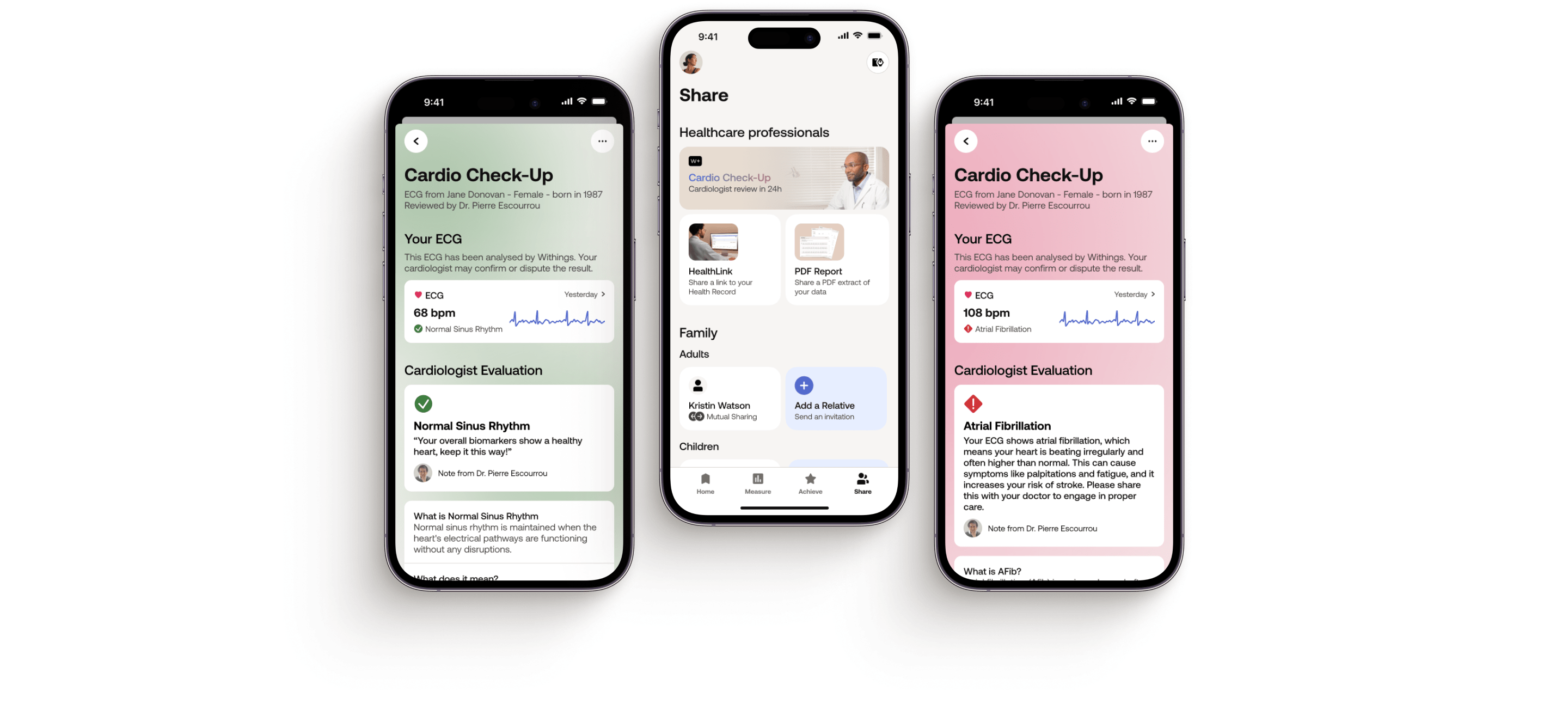
Cardio Check-Up
Receive a cardiologist’s medical review of your electrocardiogram and your contextual health data directly through the Withings app.
Valvular heart diseases (VHD) affect how the valves function regulate blood flow into and out of the heart. Often considered asymptomatic, their progression can lead to further complications and it is often associated with heart failure. Learn more about the different types of valvular heart disease, their symptoms, risk factors, and how to detect them.
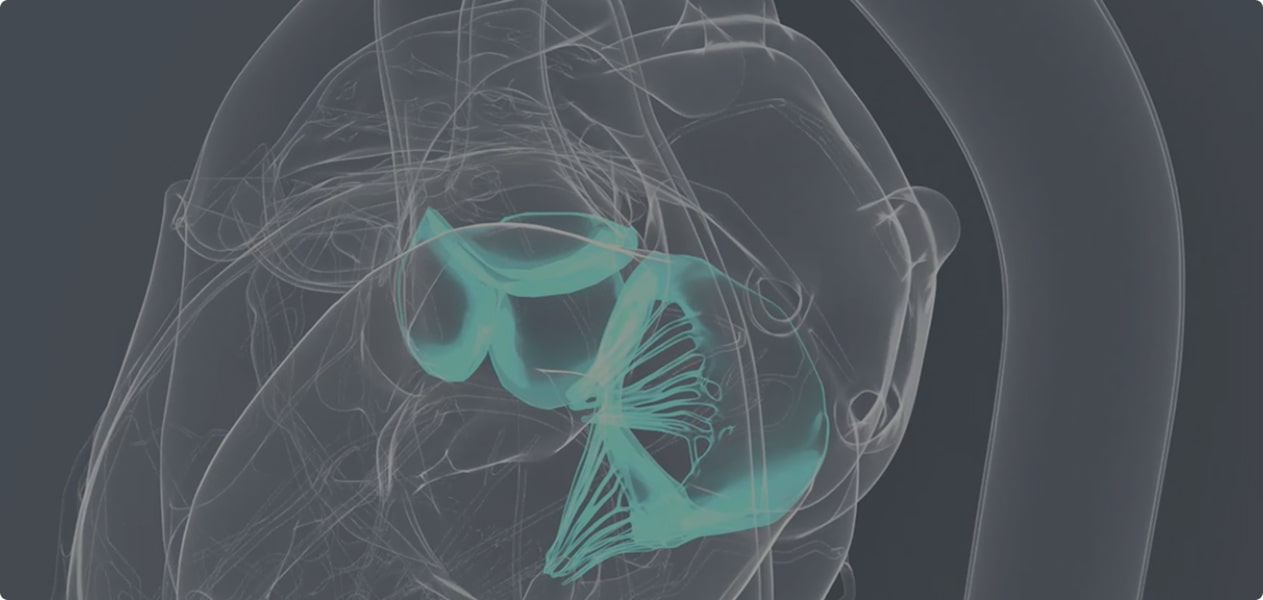
Your heart works in a synchronized way. It fills with blood and then pumps it out thanks to four valves that open and close with every heartbeat: Aortic, pulmonary, mitral and tricuspid.
Normally, valves ensure that blood flows with proper force in the proper direction.
In valvular heart disease, damage to the valves can take the shape of:
• a stenosis: the valve becomes too narrow and hardened to open fully.
• an insufficiency: the valve is unable to close fully, causing the blood to leak backward.
Schematic view of the 4 heart valves. Composed with a set of flaps, they should open enough and close tightly to prevent blood from flowing in the wrong direction.

Aortic

Mitral

Pulmonary

Tricuspid
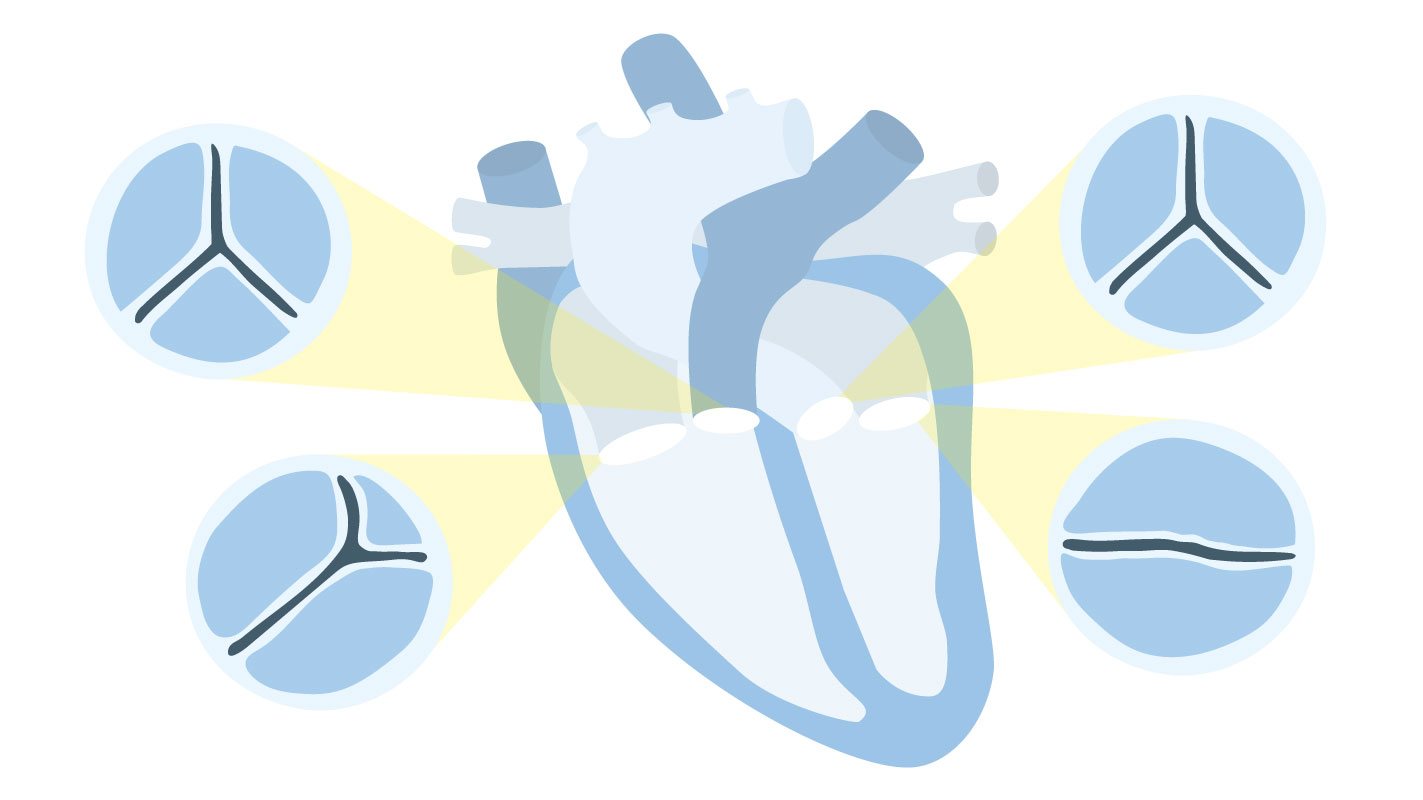
According to the European Society of Cardiology, aortic stenosis is the most common primary valve disease in Europe and North America.
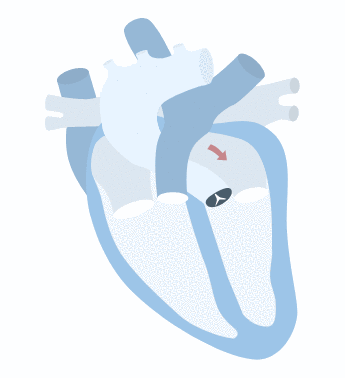
Aortic stenosis
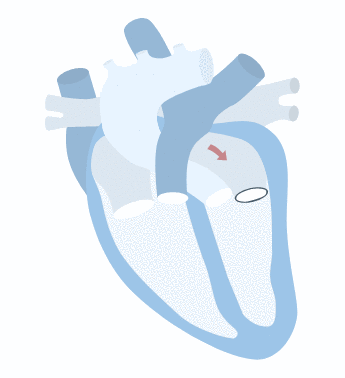
Mitral regurgitation
This form happens when the heart’s aortic valve narrows, which hinders the flow of blood to the body.
This is a mitral valve closing fault that allows part of the blood to flow backward into the left atrium.
Also known as aortic insufficiency, it occurs when the aortic leaflets do not close tightly: each time the left ventricle relaxes, leakage of the aortic valve causes blood to flow backward into the left ventricle, instead of flowing out to the body.
Advanced age
As we age, our heart valves become thicker and stiffer. The European Society of Cardiology states that “the incidence of Aortic Stenosis increases sharply after the age of 65, explaining why its prevalence reaches 5% after the age of 80.”
(source: escardio.org)
Congenital abnormalities
A person can be born with congenital valve disease.
Rheumatic fever
This disease results from untreated or under-treated streptococcal infection and may cause damage to the valves.
Hypertension
Blood pressure disorders may also be independantly associated with valvular heart diseases.
“Above a systolic blood pressure of 115 mmHg, every additional 20 mmHg was associated with a 41% higher risk of aortic stenosis and a 38% higher risk of aortic regurgitation later in life”.
(source: escardio.org)
Heart failure
This disease of the heart muscle may be associated with valvular heart disease.
Because heart valve problems may be asymptomatic, they may often remain underdiagnosed.
When symptoms appear, they are similar to those associated with congestive heart failure.
• Shortness of breath
• Swelling of the feet
• Wheezing after limited physical exertion
• Fatigue or dizziness
Approximately 2,5% of the US population is affected by valvular heart disease. The prevalence increases with age and reaches almost 13% for people older than 75.
(source: American Journal of Medicine)
If valvular heart disease progresses, the heart valve will become increasingly damaged. If the valve does not open fully or close properly, it can put extra strain on your heart. Under such circumstances, the heart pumps harder to force the blood, which can lead to atrial fibrillation (AFib) or heart failure. A damaged valve is also much more sensitive to infections.
Without surgical intervention, the survival rate of a severe symptomatic aortic stenosis is only 20% after 5 years.
(source: "Five-year clinical and economic outcomes among patients with medically managed severe aortic stenosis," Circulation)
Valvular heart disease should be detected before the heart muscle is affected in order not to delay a possible surgical intervention, such as a valve replacement. Usually, the VHD is diagnosed in two steps:

A doctor listening to heart murmurs (abnormal sound when listening to the heart beating) with a stethoscope can confirm the diagnosis of a valvular heart disease.
Patients may then be directed to a cardiologist for an echocardiogram to confirm the first diagnosis. An echocardiogram is a key instrument in assessing any type of valvular heart disease.
The disease’s evolution must be monitored so the physician can implement surgical intervention when needed.
Depending on the state of degradation of the valves, the extent of leakage or stenosis, and the impact on the heart muscle, surgical or interventional treatment is the gold-standard treatment for valvular heart disease.
Heart valve repair is used to fix defects in the heart valve. If the valve’s lesions make it impossible to repair, the valve will need to be replaced.

Cardio Check-Up
Receive a cardiologist’s medical review of your electrocardiogram and your contextual health data directly through the Withings app.

ECG Watches
Monitor your heart health daily with our ECG watches, designed to track and analyze your heart's activity for optimal wellness and peace of...

How does an ECG work? Understanding ECG and heart health
How does an ECG work? Learn how an ECG/EKG records heart activity, identifies issues, and provides insights into heart rate, rhythm, and...
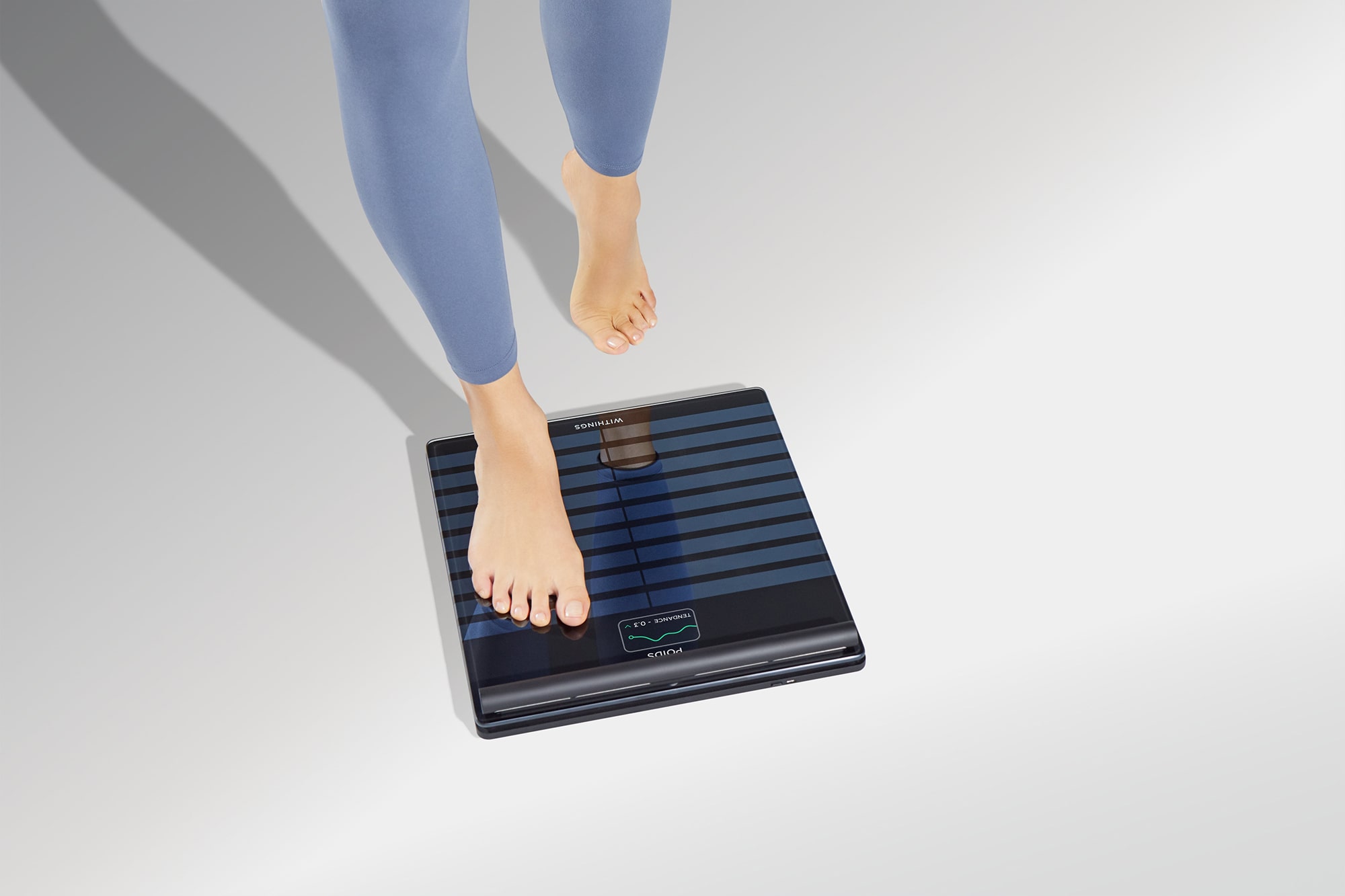
Weight and heart disease: How weight loss reduces cardiovascular risk
Discover how excess weight increases heart disease risk and how weight loss can improve cardiovascular health, reduce heart failure, and...
on your first order by registering
By registering, you agree to receive advertising e-mails from Withings. However, if you change your mind, you can unsubscribe at any time. *The discount is valid for any purchase (except BeamO and U-Scan Nutrio) of at least €100 for 30 days after reception of the code. Only valid on withings.com, and while supplies last. This offer is only valid for first-time purchases. These offers cannot be combined.